Kabam
In 2018 I returned to the mobile games space and joined Kabam in Vancouver, BC. I’d onboard into the Lead UX/UI Designer role on their brand new partnership with Disney to create an ARPG mobile title to reimagine the Disney universe.
During this time I would takeover the UXUI team and join a game team that was struggling to meet tight deadlines on its way towards World Wide Launch. My responsibilities included managing and prioritizing the team as well as communicating and managing cross-team and partner relationships and approvals.
Disney Mirrorverse
Re-imagining a Disney universe and the challenges of re-imagining a game during development.
Rocky start and revolving leadership
I would be the 3rd UXUI Lead on the Mirrorverse project and before the end of our Beta our team would undergo three reskins of the UI as the game team struggled with more than three attempts to launch. As the project continued we would see shifts in direction as we continued to understand our game and our place in the market.
We’d start off redefining the UI Styleguide and the core loop. Similar to the reskin, the core loop and RPG experience was still being redesigned around a completely new type of gameplay based on the company’s previous tech in Marvel Contest of Champions and Transformers Forged to Fight. Alongside game designers, we would quickly re-establish the core pillars of the game’s UX and provide documentation and wireframes towards the entirety of the core loop within my first 3 months.
Styleguide V2, 2019. ‘Blue Light’ (UX: Kevin Deng, Ellie Moon, Jonathan Donegan, Dongjun Kim. UI Art: Scott Lindsay, Jennifer Duong)
Styleguide V3, 2020. ‘Modern Fantasy’ reboot. (UXUI Direction: Roger Lee, UX Magicians. UI Art: Scott Lindsay)
Advocating for users and the design process
During this time I would advocate for UX and Product Design principles and look to establish more human centered design processes in the game development cycle. With much of the game team’s history coming from traditional AAA game development and the tribal knowledge built-in from the studio’s flagship, ideas like ‘Lean UX’ were met with resistance.
While some Lean/Agile processes would prove to be controversial, we would find some successes like implementing compacted Design Sprints (a more “game developer” friendly version), establishing Prototype motivational profiles, and utilizing and advocating for more user research.
Design thinking and product leadership
Throughout the development we would experience rocky changes with product leadership and realign on parts of the product vision. During this time I contributed as part of product leadership in various product owner groups, workshops, and key stakeholder meetings. This would ultimately culminate into some difficult decisions we had to make on potentially pivoting the product as user adoption was significantly lower than originally expected. During this time we would join User Research and help to triage and examine the issues and become a critical voice in product iteration proposals.
Pivoting in a pandemic, a radical revert.
As British Columbia headed into quarantine in Mid-March we hoped to make a transition to working remote. With prior experience and familiarity with remote resources (digital whiteboards, slack migration) I would help to secure the team tools and help the team transition to working from home. As we headed into summer with our second ship date looming, our initial ‘half-idle/half-action’ RPG was not able to create a sticky experience. The game team would pivot breaking into several strike teams focusing to move into a more traditional Action-RPG brawler.
Strike teams & Pivots
Rebuilding RPG Systems and re-examining the player experience.
Beta 0.8 and Beyond
With KPIs and user adoption metrics at unsustainably low rates, the game team made several drastic pivots to reposition the product into the action/brawler RPG genre. The product would be put into maintenance mode as the game team looked to go so far as to reboot core gameplay from a squad based strategy game into a twin-sticks single-character control action brawler. During this time I would contribute in several key areas and initiatives:
Questing ‘World Map’ redesign with objective reminders.
Provide a more ‘narrative’ setting and experience with a Saga Map. Exploration and questing in the game was inherited from MCOC where players fought in an abstract battleworld. While questing players health used an attrition model to whittle player teams down as they fought towards an end-boss. Players were often confused without context in these space-like settings and left feeling “nickel and dimed” paying for healing consumables.
Example of players attempting to navigate and revive teams after losing.
Questing World Map, Post 0.8
Our hypothesis was to move towards a more traditional world map with environments players wanted to explore. Our user research indicated that players were most motivated by story and narrative. We also believed that by moving to a more traditional star objectives system we could retain more players by getting them deeper into the quest content. While this seemed fairly straight forward, being able to adapt previous systems and technology proved to be quite a feat.
Quantitative research showed players understood how to use and navigate the map.
Old progression systems attempted to combine many different functions and resources for players to combine.
Revamping RPG progression and Gacha systems. In the initial Beta, we had several twists on RPG progression and Gacha that required many seasoned RPG players to relearn and invest time in understanding how to advance their characters. Skills, heroes, and leveling materials were all driven by collecting shards. This led to a delayed sense of gratification and left users without any specific jackpots to chase in Gacha. Working with system and quest designers, UX would rebuild all our character progression flows and reward screens. Abstract ability progression systems would be broken into more familiar skill and gear systems that players found easier to understand and use.
Tour of new Character Details user flow
The results of Beta 0.8 provided a much needed lift across the board in KPIs and engagement. User retention from our D1 jumped from <20% to over 80% with a surprising sustained lift in D7 from <3% to over 23%. Chapter 1 completion would jump from <20% to 32%. Early user research provided quantitative evidence that players were indeed enjoying improvements made in the game.
Before and after pivot retention
Systems and documentation
Throughout the process of game development I would contribute by helping to provide guidance and documentation in UX/UI systems based on the underlying technology systems in place. Collaborating with game designers, FE/BE developers, and feature stakeholders we would translate how features and systems would work from authoring tools, data structures, and our game framework’s capabilities. Working with our engineering team, we would be able to prioritize or pivot designs to fit the limitations of the tech or time constraints, but occasionally we would work to develop new emerging core technologies such as third party chat, social graph, or implementing new UI particle and feedback systems.


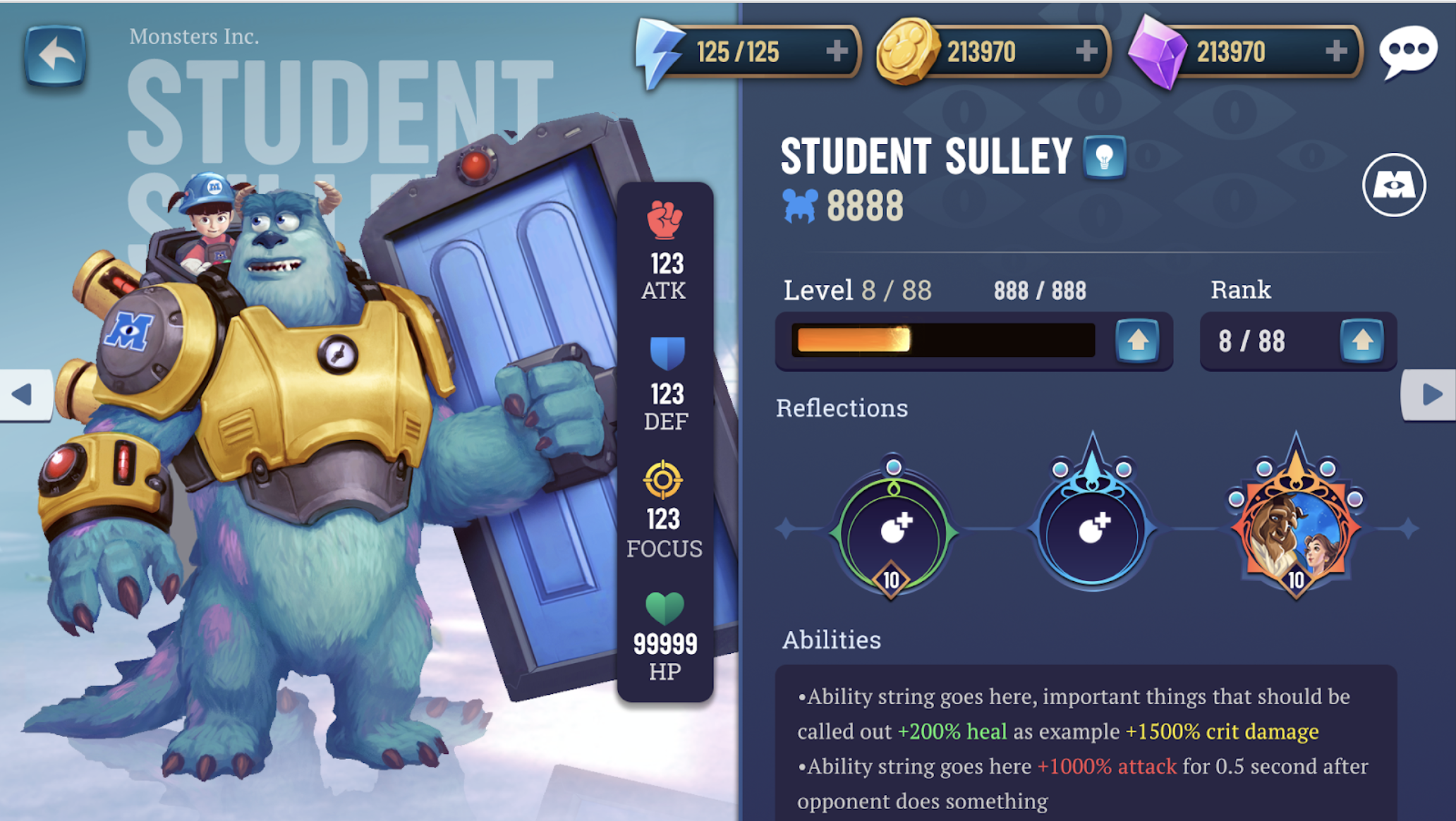
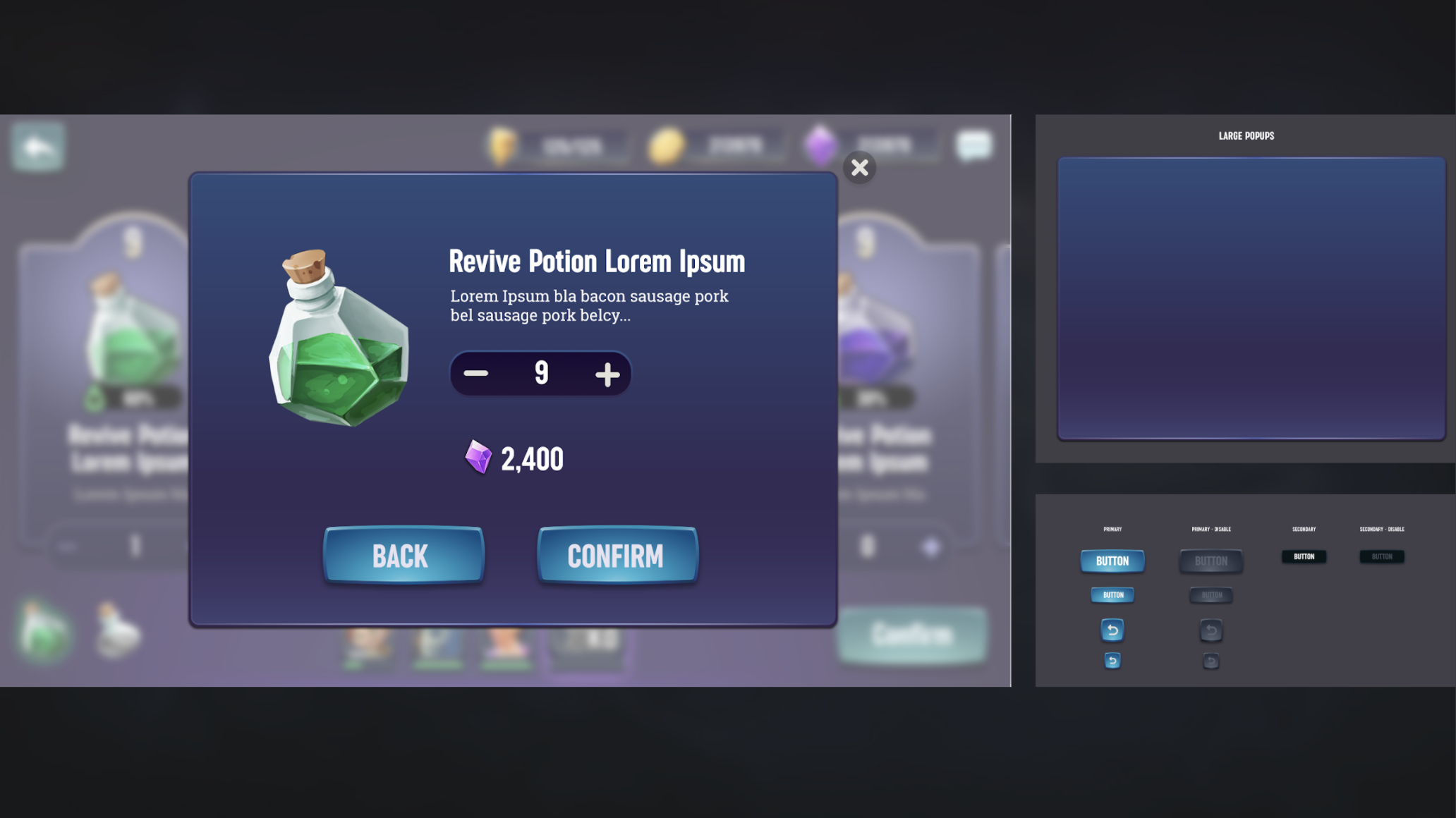
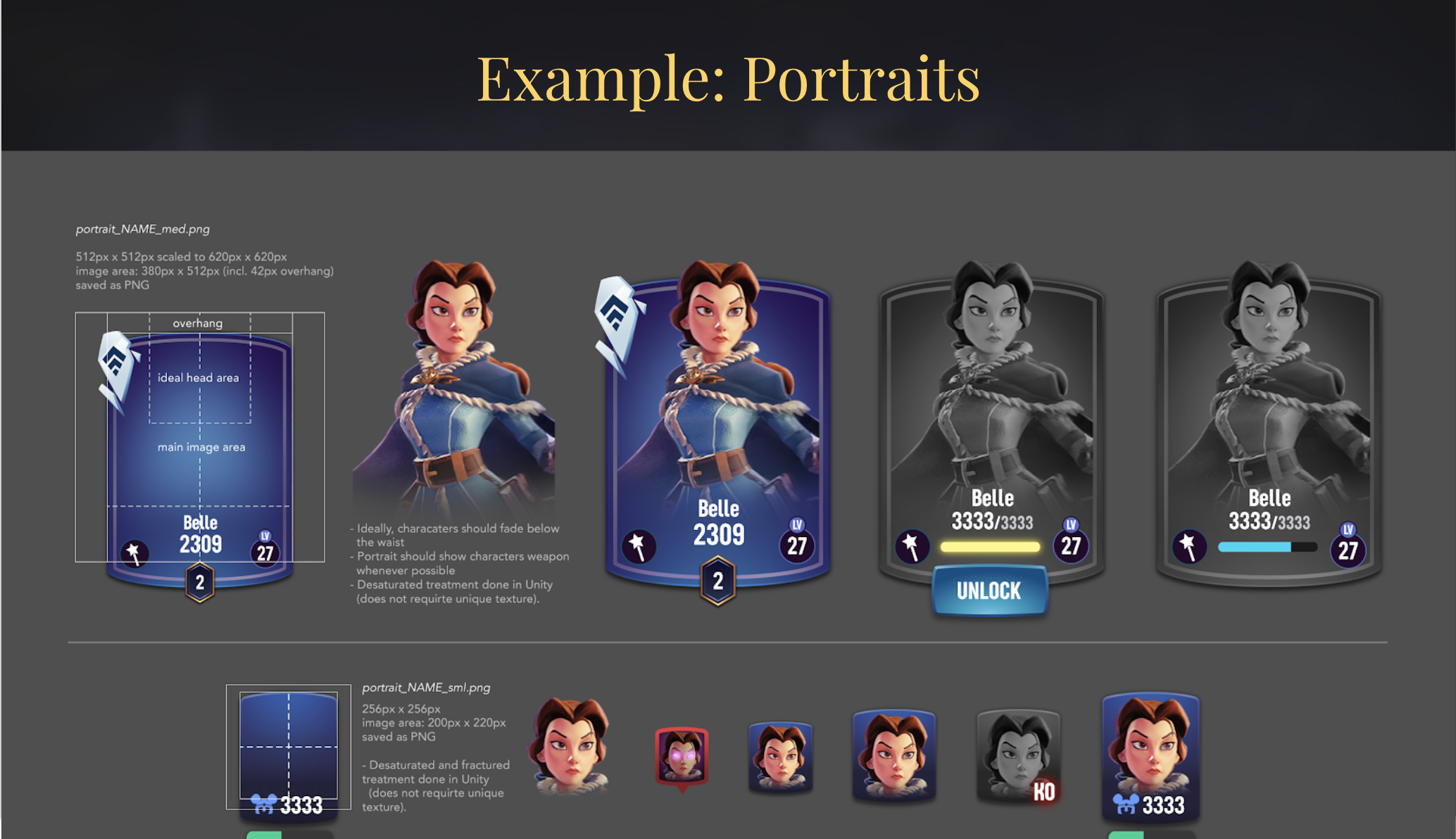
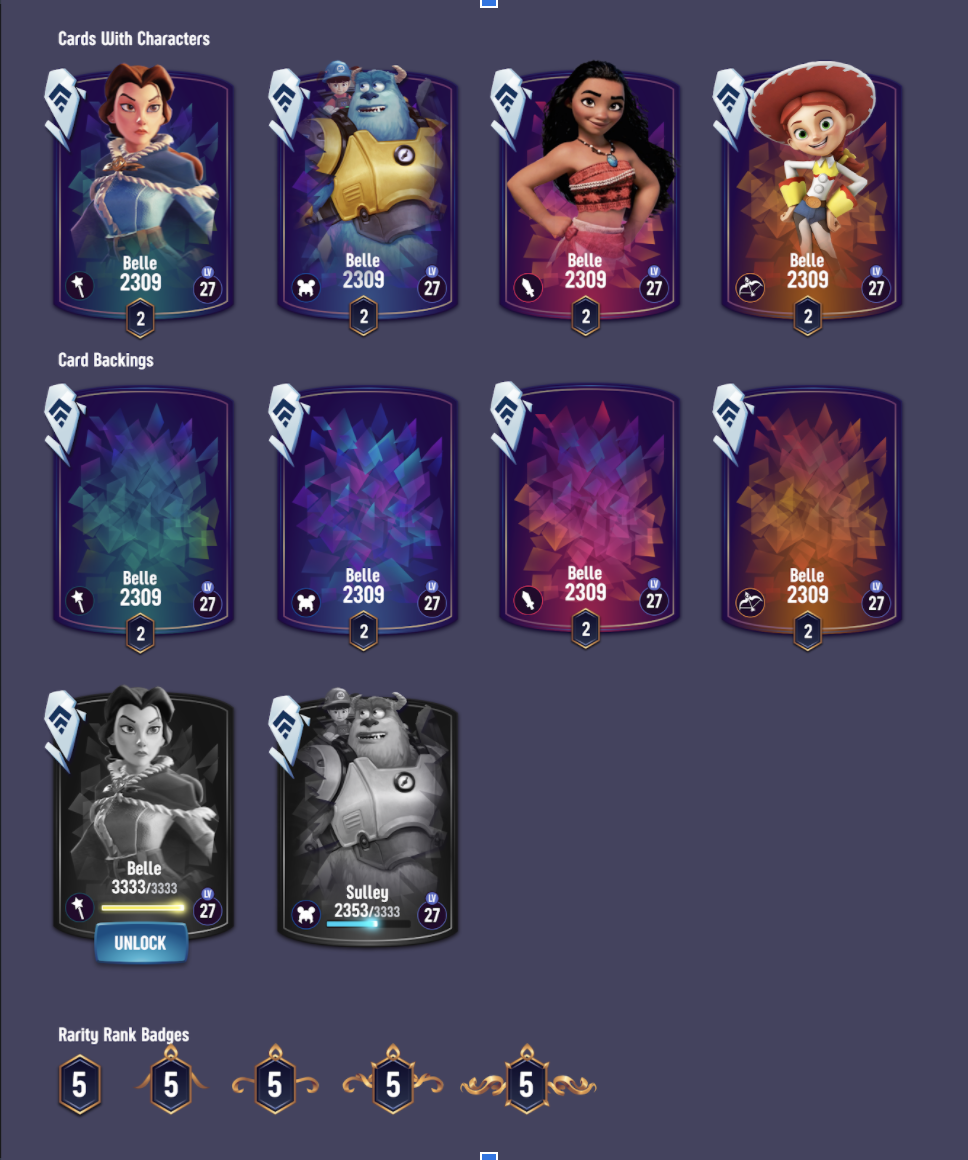
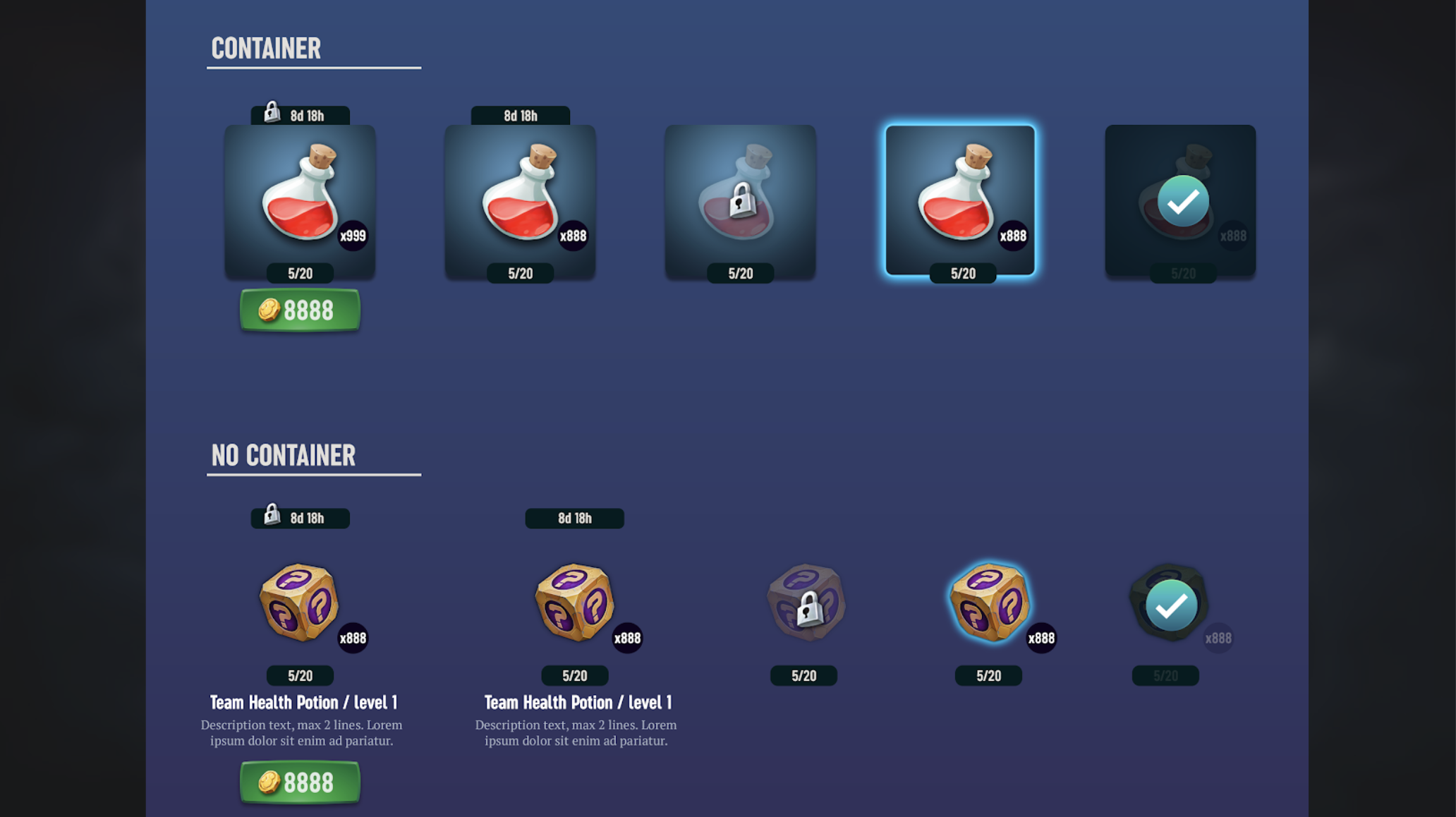
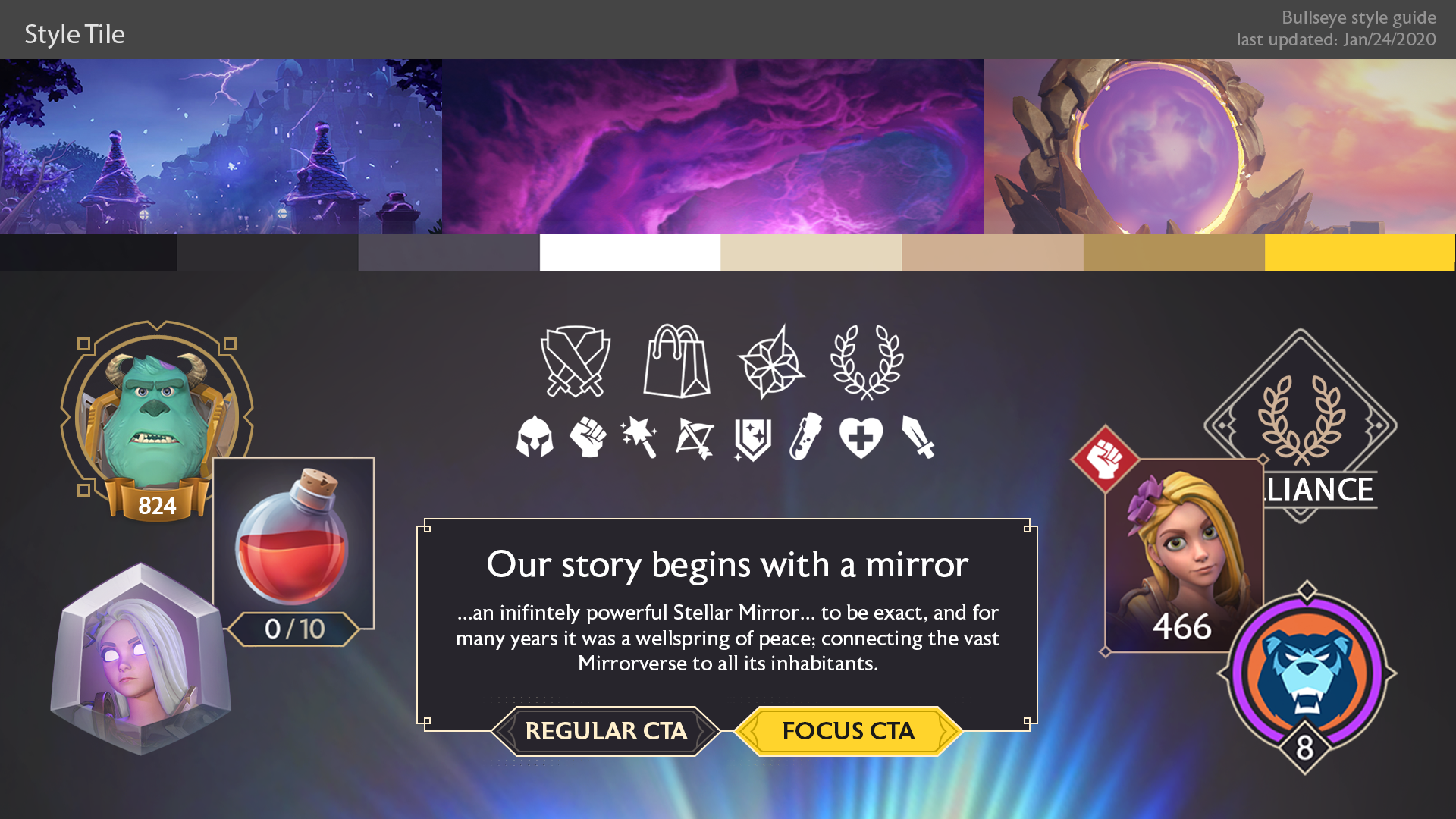
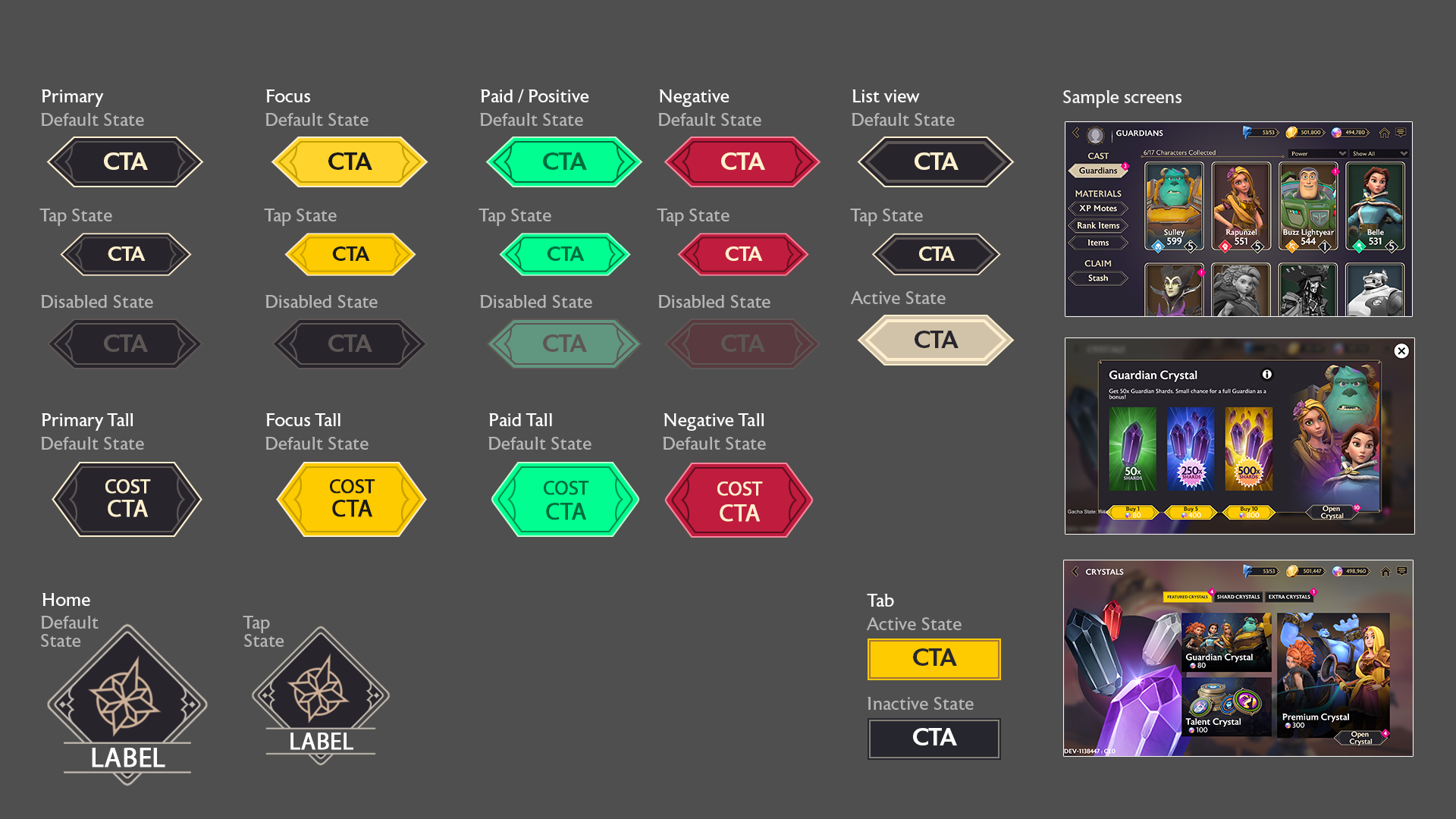
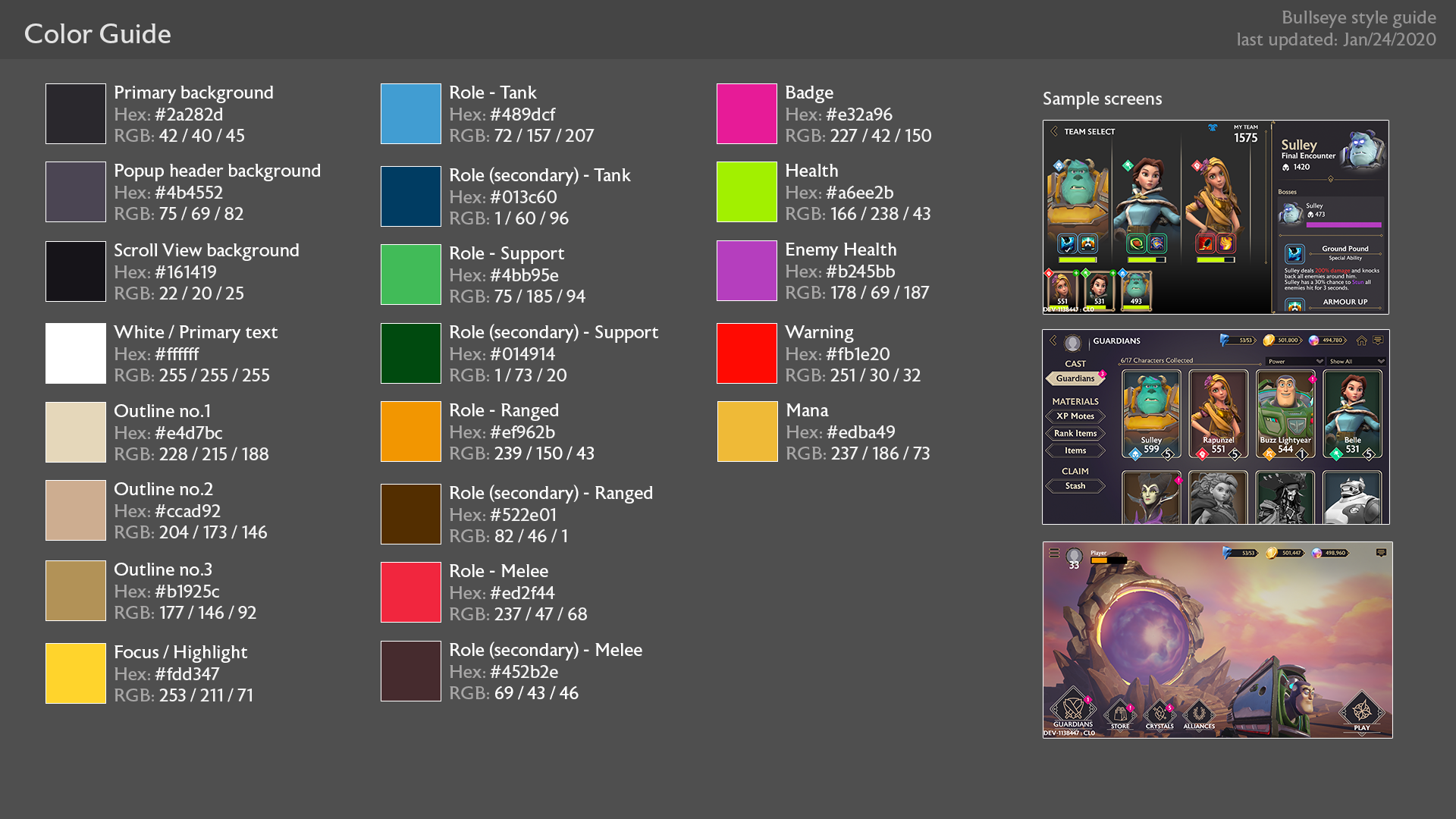
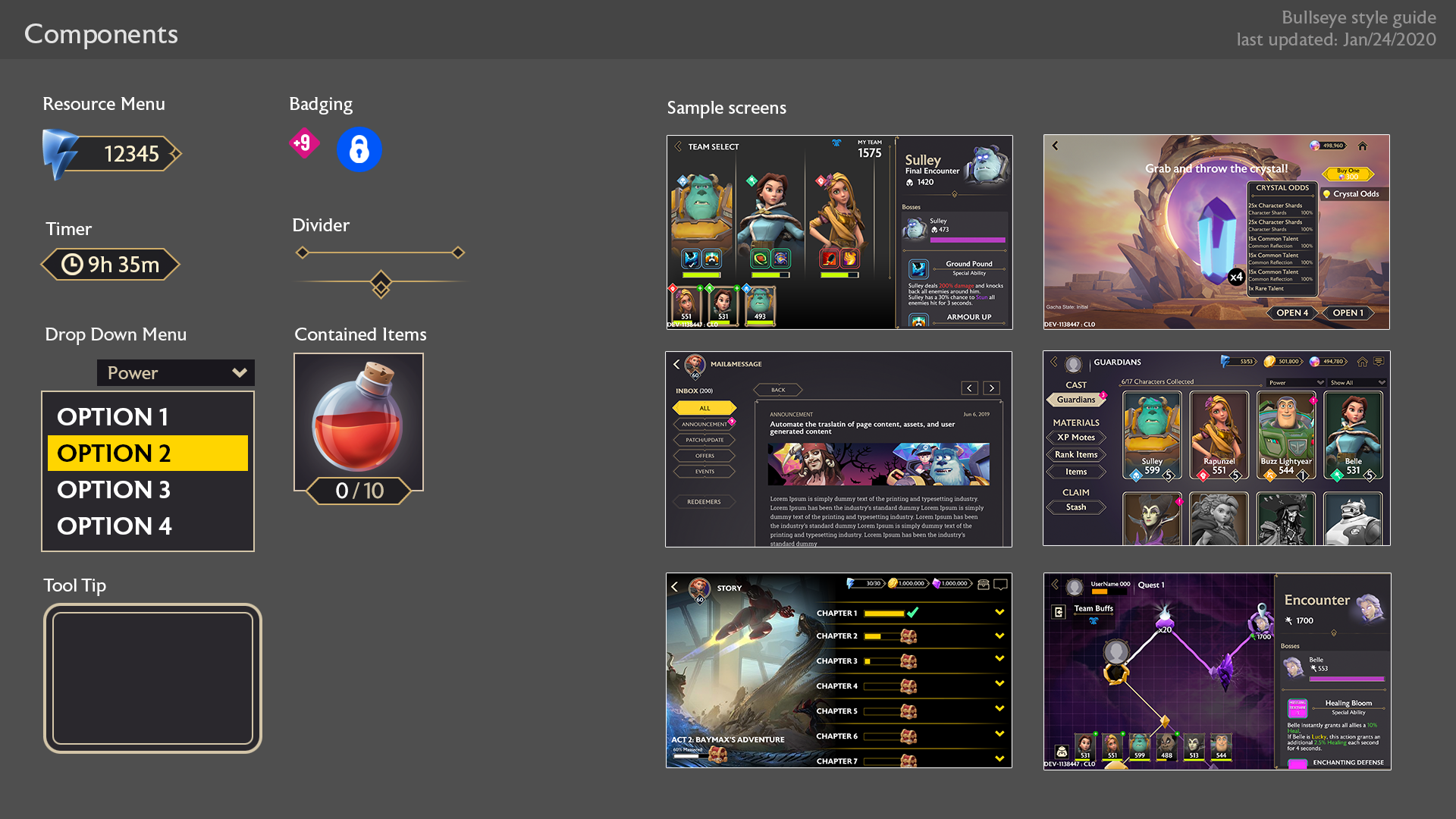
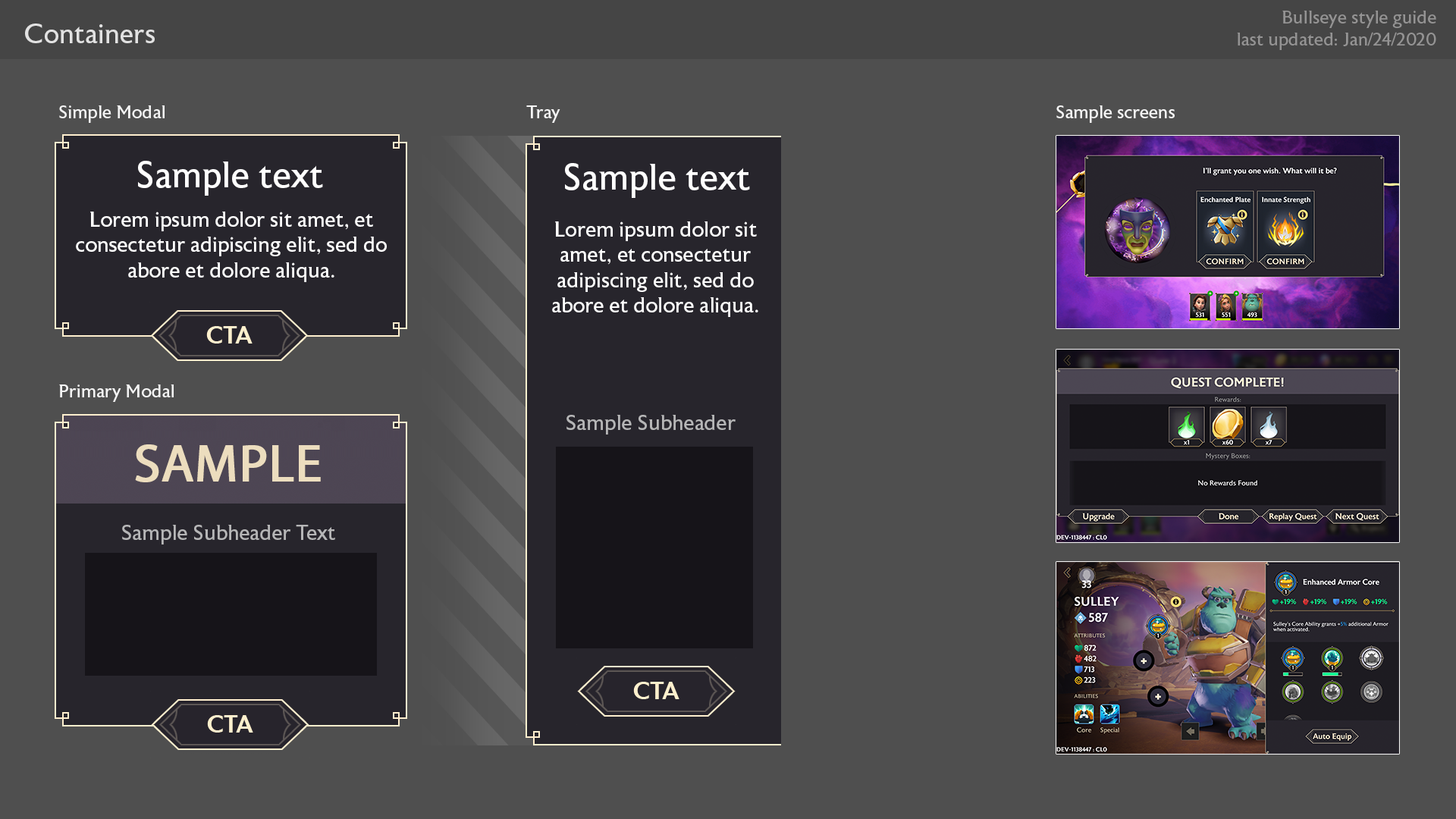
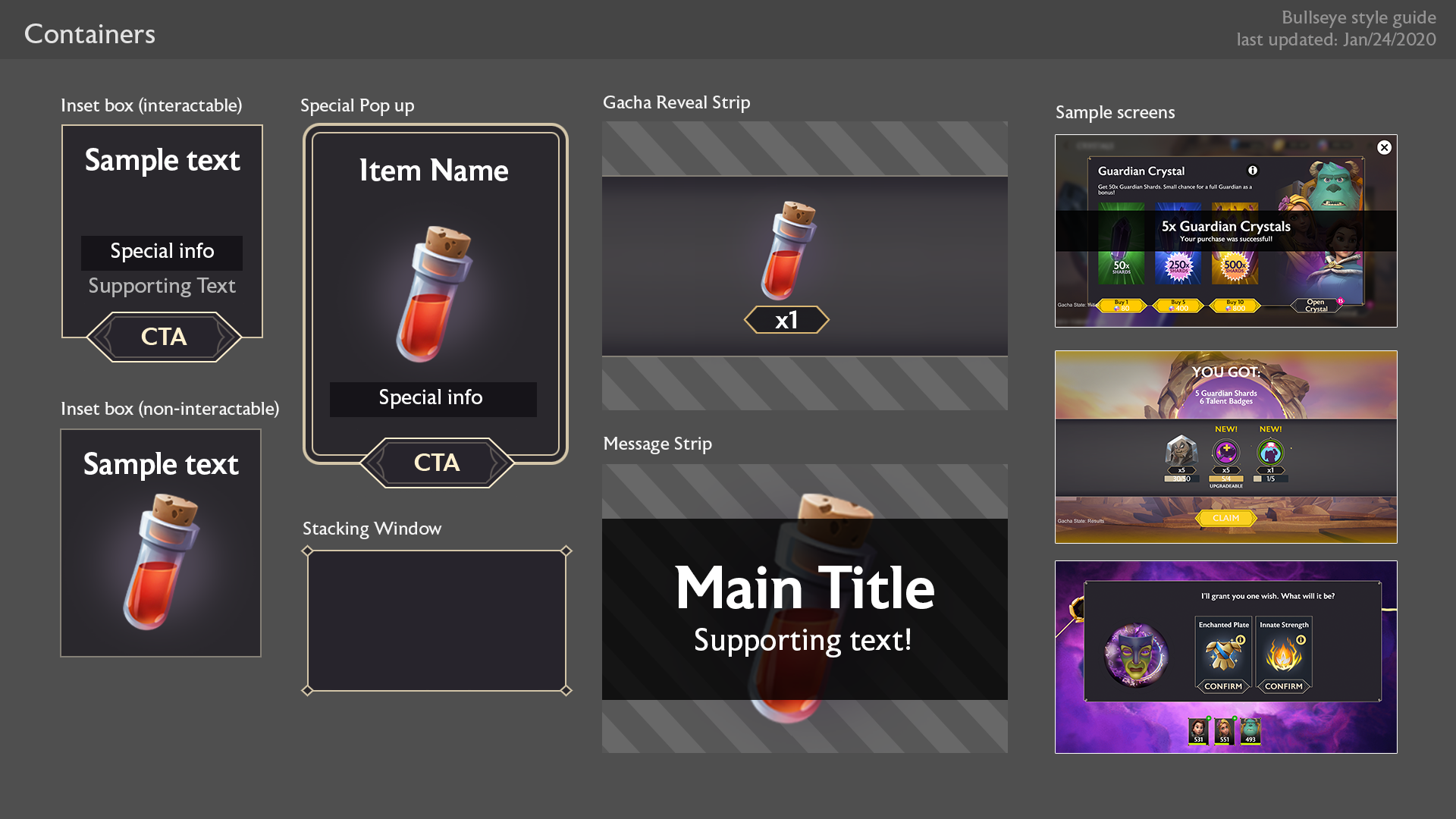
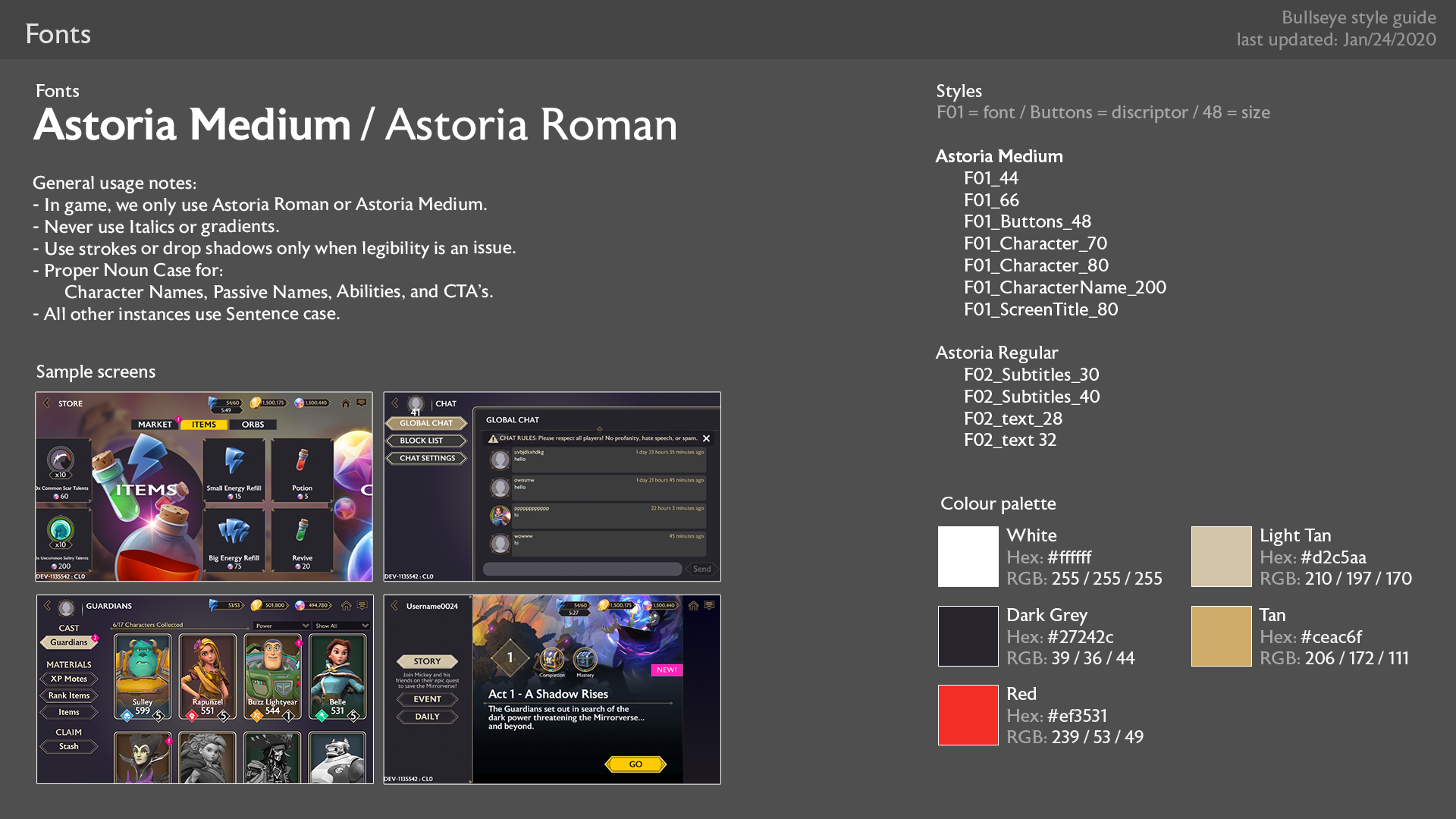
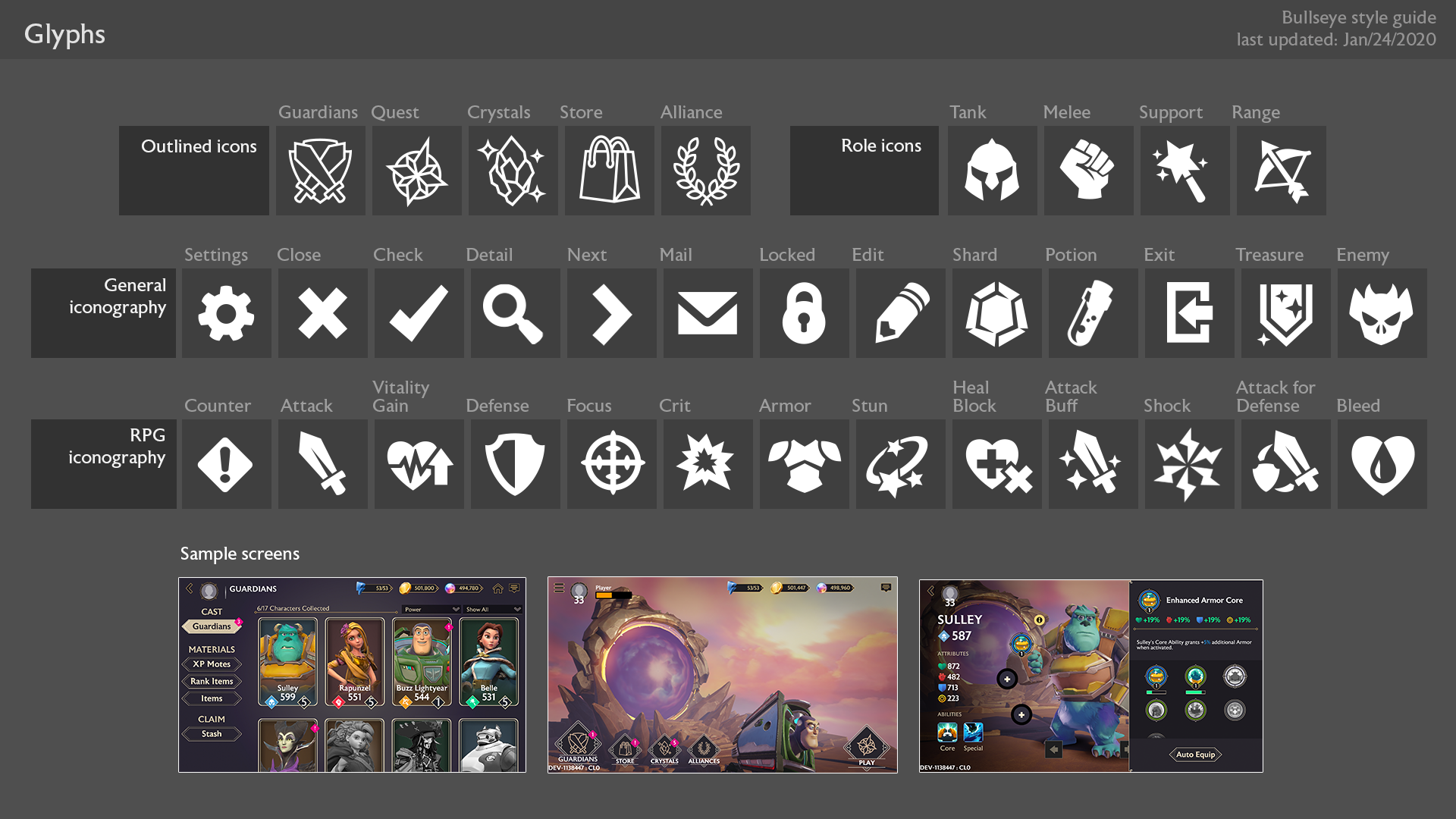
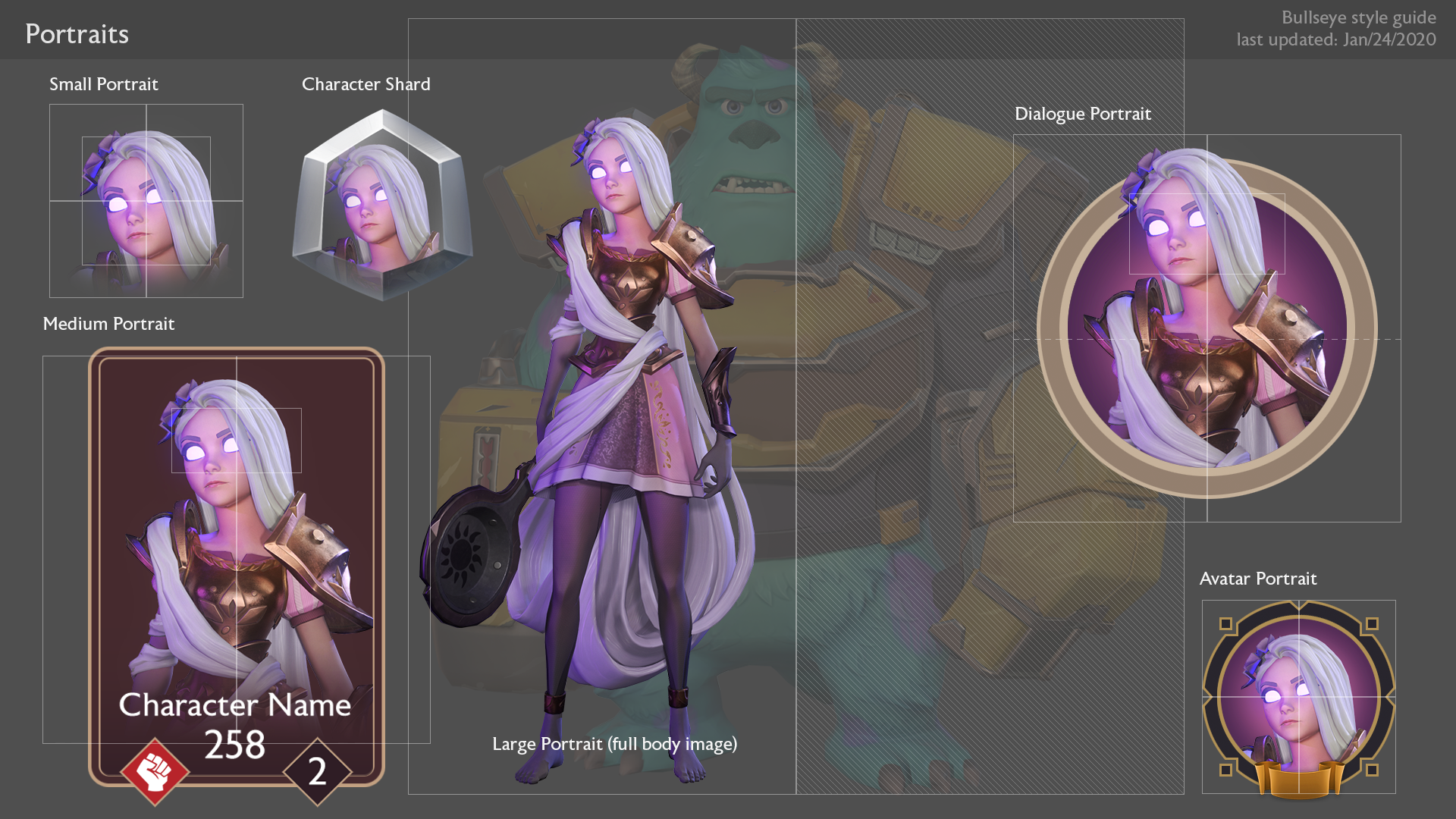







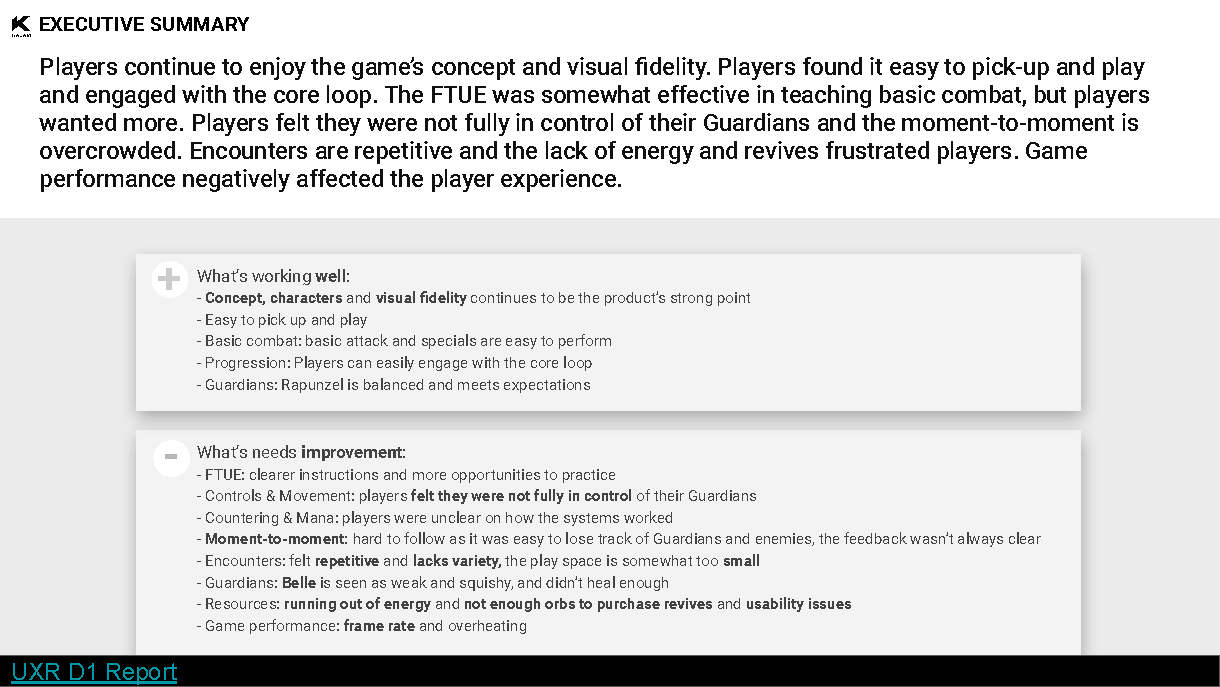








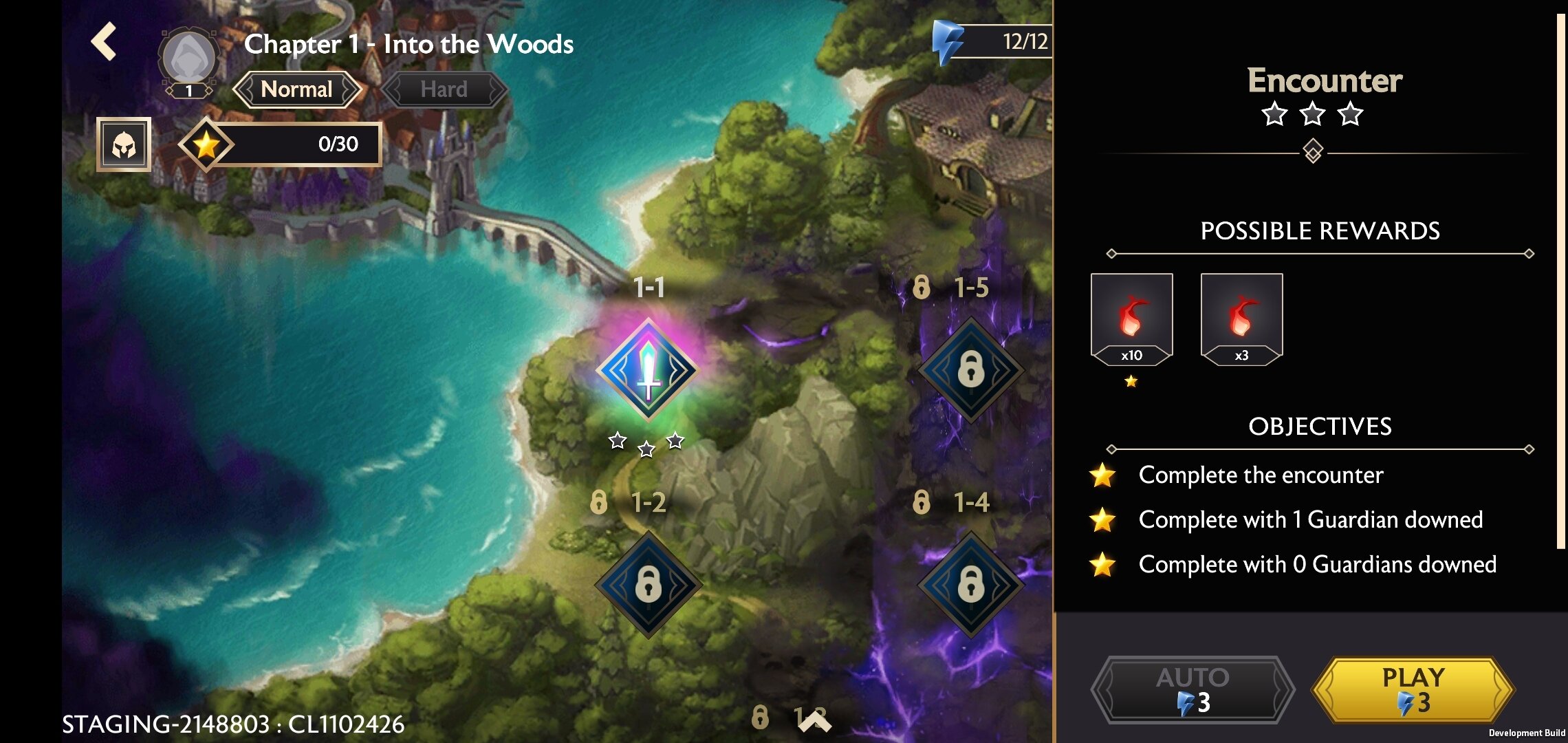





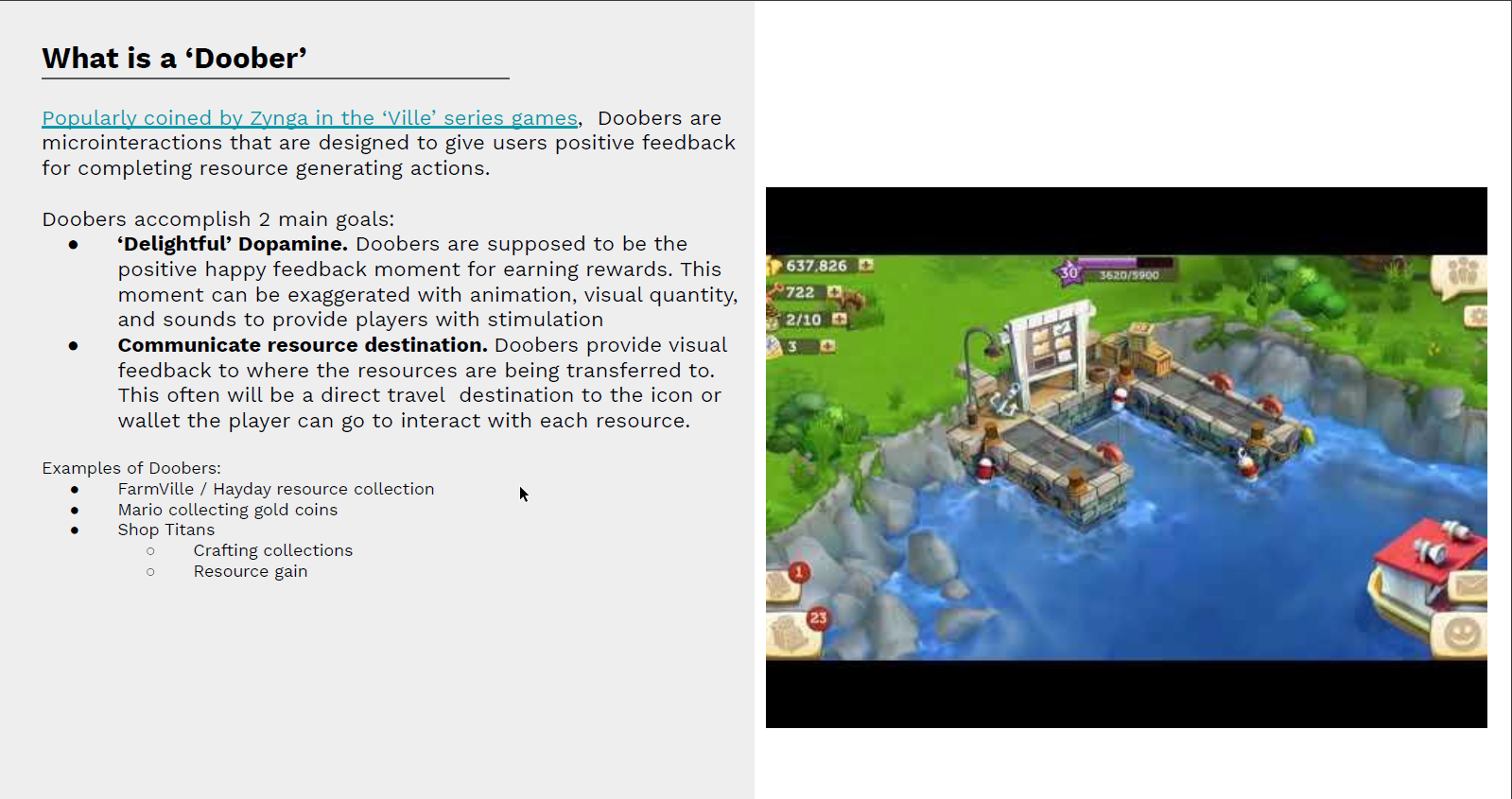






Proto personas based on Player Motivation models from Quantic Foundry help dev teams to understand our target audience’s main drive.
Our profiles would be developed as a hypothesis of the product leadership through affinity mapping our assumptions of players in our previous experiences and titles.